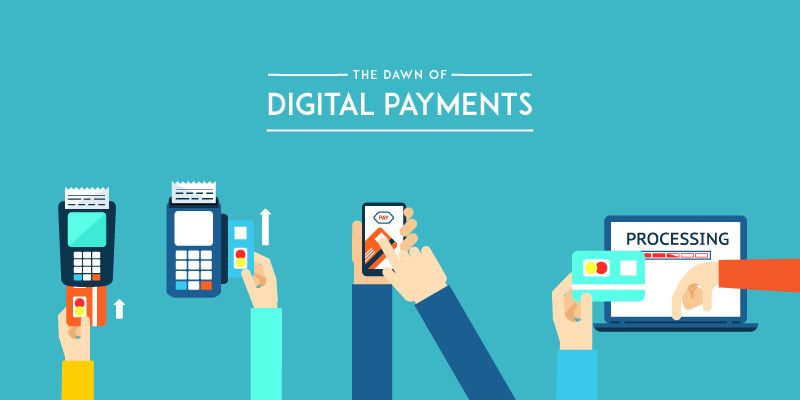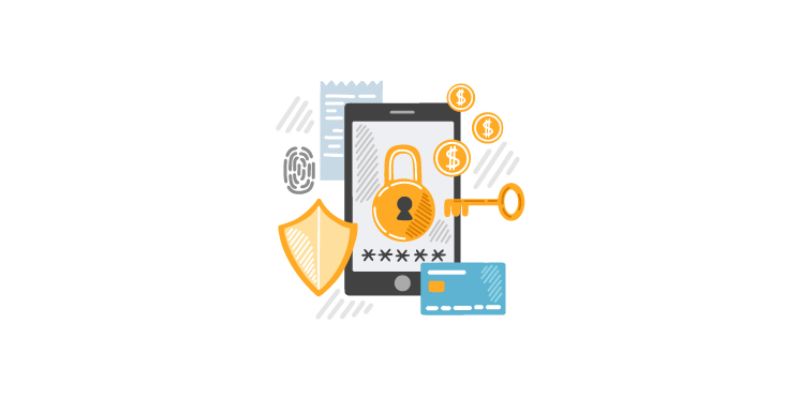Challenges of Digital Payment Platforms: Navigating the Cybersecurity Maze
In today’s online shopping rush, the challenges of digital payment platforms are like a giant maze. Each turn could lead you to new risks. From hackers eager to grab your cash, to laws that twist and turn, staying safe isn’t easy. As a pro in cyber-smart spending, I’ll guide you through this tech jungle. We’ll look at both the traps and the treasures of digital payments. Stick with me, and let’s crack the code to a safer checkout experience.
Understanding Financial Technology Risks in Digital Payments
Assessing the Current Landscape of Online Transaction Security
Working in financial tech, I see how online payment risks change daily. When you buy online, you may wonder, “Is my financial data safe?” Let’s start with what keeps your payments secure and what does not. Online transaction security relies on tech that scrambles your data. This makes it tough for bad guys to grab your credit card info.
Still, just like a game of cat and mouse, cybercrooks are smart. They find ways around our best defenses. Thus, security pros like me must stay ahead with better safety methods. We always look for holes in payment systems where trouble could start. These could be weak passwords or old software that did not get an update. If we find these early, we can fix them before any harm is done.
We also use a trick called fraud detection. This means watching out for shopping that does not match what you usually do. If you always shop in Miami, and we see purchases from Paris, we’ll check if it’s you. We can stop dodgy deals this way before they go through. Fraud detection keeps your card safe from sneaky thefts.
Kids’ games like “spot the difference” might seem a world away from this. Yet, finding small changes in buying habits is like finding changes in pictures. It is a simple idea that can save people a lot of money and stress.
Mapping Cybersecurity Threats Unique to E-Payments
When we talk about e-payments, we’re on a different playing field. Cybersecurity threats in e-payments often fit just this world. We must watch out for scams that trick folks into giving away card details. We call this phishing. It’s not the kind with a rod and reel but the kind with a fake email or website that looks real.
Crooks can also hack right into payment systems. This is where they find a path inside and get to places they shouldn’t. When this happens, it’s called a data breach. Many people can lose their info in one big scoop. It’s scary, and it’s my job to help stop this.
One layer of armor we use is called multi-factor authentication. You may know it as a code sent to your phone when you log in. It’s a way to check if it’s really you buying those new shoes online. It adds a step, but it’s worth it to keep your money safe.
We also have to obey big rules set by folks who watch over banks and stores. This includes things like Know Your Customer rules. We make sure we know who’s using our service so we can spot when something is off. When it comes to fighting cyber baddies, it’s all hands on deck. We love tech, but we’re always on guard for its dark side.
From my desk, it’s a wild world online. We navigate it looking for safe paths for your data, and to keep your trust with us. It’s like we’re on a cyber tightrope, and we take each step with care, so your money lands where it should.

Tackling Fraud: Advanced Detection and Prevention
Machine Learning in Fighting Fraudulent Transactions
In the fight against fraud, we see more bad guys who trick the system. But good news! We’re getting smarter too. With machine learning, it’s like we have a super-powerful friend. This friend looks at tons of data to spot what’s normal and what’s not. When something fishy pops up, like someone buying a hundred TVs at once, machine learning waves a red flag. It tells us, “Hey, look here, this could be a con!”
How does it work, you wonder? Imagine you’re at a carnival playing whack-a-mole. Now, think of machine learning as the ultimate champion, hitting the moles as soon as they pop up. Except, in our world, these “moles” are sly fraud attempts, and they’re a lot sneakier. Machine learning watches past games, learns what typical moles look like, and – bam! – it gets them fast when they show their heads.
This way, good people can shop and not worry. Their money stays safe because machine learning is always on guard, ready to whack those moles.
Protecting User Data Privacy Amid Increasing Data Breach Risks
Now, let’s talk about keeping secrets safe – I mean, user data privacy. You’ve got names, birthdays, even secrets like who’s been eyeing those skateboards online. But crooks want to steal these secrets. They want to break into our digital vaults.
So, what’s the plan? We build walls – no, fortresses – around this data, with locks needing not just one, but many keys. Think of it like your diary that needs a secret code, your fingerprint, and maybe even your voice to open it. This is called multi-factor authentication. It’s like having a guard dog that barks if someone it doesn’t know tries to peek inside.
But walls can crack, right? That’s why we also teach everyone to be on the lookout. When we know what tricks might come our way, like fake emails from an “uncle” who suddenly needs money, we’re better at stopping them.
We all agree that our secrets should stay ours. That’s why we check over and over to make sure our walls are strong. And if we find a small crack, we patch it up quick. This way, everyone can feel safe, knowing their data won’t fall into the wrong hands.

Ensuring Compliance and Security in a Global Payment Network
Navigating Regulatory Compliance Challenges and Anti-Money Laundering Measures
When we send money around the world, rules change like the weather. Each place has its own way of doing things. We must make sure we play by these rules. This keeps us safe and out of trouble. We call this “staying compliant.” It means we follow laws that stop bad guys from using money for bad things, like money washing. It’s a tricky game of catch-up. Bad folks constantly find new tricks. That’s why we stay sharp and keep our systems in check.
Mitigating Risks in Cross-Border Payments and Digital Wallet Security
Let’s talk about keeping money safe when it crosses borders. When you send money far away, it can get tangled up in a web of different rules and fees. Just like hiking in the woods, we need to watch out for pitfalls. Scammers are like sneaky animals. They can snatch our cash if we’re not looking. That’s why we set up traps and alerts. This way, we catch them before they catch us. We call these traps fraud detection systems. They’re real smart and learn from each sneaky move scammers make.
Now, think about carrying your money in a digital wallet. It’s super handy, right? But just like a real wallet, you wouldn’t leave it open for thieves. Digital wallets must be locked tight with a secret code or finger tap. We call this multi-factor authentication. It’s like having a cool secret handshake to get into your wallet.
Hopping from one country’s money to another can also shake things up. This is called “currency conversion.” Doing this can cost extra, and it changes with the market like fish prices at the wharf. Smart platforms can help find the best deal. They skip over high fees like a kid jumps over puddles.
But what happens when something goes wrong? Say someone takes money without asking (that’s called an “unauthorized transaction”). We need a clear way to fix things. This is like having a first aid kit for money problems. We need a plan for who gets their money back and how.
You see, each piece of the puzzle – from following rules across seas to strapping down our digital cash – is key. We’re like detectives. We sniff out trouble and protect our money fort. We always have to stay smart and watchful. That’s how we keep trust in online payments strong. It’s a game of high-tech hide and seek, and we’re aiming to win.

Advancing Financial Inclusion and Trust in E-Commerce Transactions
Addressing Scalability and Transaction Speed to Support E-Commerce Growth
E-commerce is booming. That’s great, right? But as more people shop online, digital payment platforms face a big test. They must handle tons of transactions fast without crashing. This test is about scalability and transaction speed.
Imagine a big sale day like Black Friday. Millions of people are buying at the same time. Payment systems must work fast to keep up. If they are slow, people might leave their carts and not buy. No one likes to wait, especially when they are ready to give you money.
Now, how do we make it better? We upgrade our tech and get smart software that can grow as needed. It’s like training for a big race. You start small and build up to run faster and longer. This is what payment platforms do to keep up with e-commerce’s speedy growth. They train their systems to handle the dash of transactions every day.
Educating on Digital Payment Literacy and Building Consumer Trust in Online Payments
Now, let’s talk trust. Paying online is easy but can be scary for new users. They worry about bad people stealing their money. To fix this, we need to teach them how digital payments work. Think of digital payment literacy like learning to swim. You feel safe in water once you learn how to swim. It’s the same with online payments.
We show people how to spot scams and tell them about secure checkout. If they know what a secure payment looks like, they can shop without fear. And they will come back to shop again.
We also tell them about laws that protect them, like refund policies. For example, if someone buys a toy and it’s broken, they can send it back and get their money. Knowing this makes them trust online shopping more.
Trust is like glue; it keeps customers sticking to your shop. Build trust by teaching customers and making their payments safe. It’s simple – when they trust you, they’ll buy from you.
So, we work on two big things for e-commerce. First, we make the payment systems fast and strong. Next, we teach people how to pay online safely and securely. Doing these things helps everyone. Customers are happy and buy more. Shops sell more, and the online world grows. Together, we can make sure online shopping is fun, fast, and safe for everyone.
We’ve looked deep into online payment risks, from cyber threats to fraud. We saw how tech like machine learning steps up to stop these bad acts. Keeping personal info safe as data breaches rise is also key. Then, we checked how global payments stay on track while following tough rules and keeping money clean from crime. We also made sure payments cross borders without trouble and wallets stay safe.
We then turned to how digital payments help more people join in and trust online shopping. This means making sure money moves fast and easy to keep up with stores on the web. Teaching folks how to pay online safely builds this trust, too.
Every click you make, we’re finding better ways to keep it safe. Let’s keep paying online, smart and secure!
Q&A :
What are common security concerns with digital payment platforms?
Security is a prime concern with digital payment platforms as they deal with sensitive financial data. Key concerns include data breaches, where personal information is exposed to hackers; fraudulent transactions; and the risk of identity theft. Moreover, the threat of malicious software, such as ransomware or spyware, can undermine the integrity of a payment system. Implementing robust security protocols and educating users on safe payment practices are essential to mitigating these risks.
How do digital payment platforms handle transaction disputes?
Digital payment platforms typically have a structured process to handle transaction disputes that may involve unauthorized charges, non-receipt of goods, or services not rendered as promised. Users can file a claim within the platform, after which an investigation is conducted. The resolution process may involve reimbursement of funds or mediation between the parties involved. The specifics of the dispute resolution process can vary between different platforms and are often outlined in their terms of service.
What are the technological challenges faced by digital payment platforms?
Technological challenges for digital payment platforms revolve around maintaining seamless transaction processing, ensuring compatibility across different devices and operating systems, and overcoming issues related to scalability as user bases grow. Additionally, keeping pace with the latest advancements in fintech, like blockchain and cryptocurrency integration, can be demanding. Platforms must continuously innovate to provide reliable services and retain user trust.
Are digital payment platforms accessible to everyone?
Digital payment platform accessibility is a critical issue, with factors like internet connectivity, financial literacy, and availability of supportive infrastructure playing significant roles. While widespread smartphone adoption has facilitated access, some user groups such as the elderly, those in rural areas, or individuals with limited tech proficiency may face barriers. Ensuring universal access often involves creating user-friendly interfaces and offering educational resources to help onboard new users.
How do digital payment platforms impact traditional banking?
Digital payment platforms have a profound impact on traditional banking by offering more convenient, faster, and often cheaper transaction options. This has led to increased competition, forcing traditional banks to innovate and integrate digital services within their offerings. The synergy between banks and digital platforms is evolving, as some banks partner with fintech companies to extend their reach and adapt to changing consumer demands. However, this also prompts regulatory challenges and a re-examination of traditional banking models.

